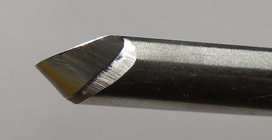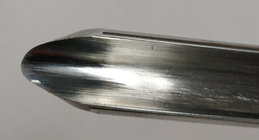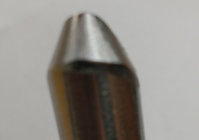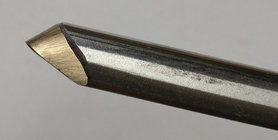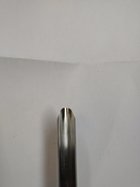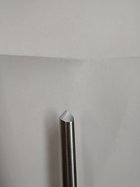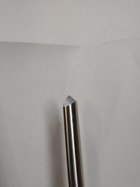Hi everyone, as you may know I am new to turning and especially bowl turning. I do value everyone's advice on this forum.
So I have several " wet" sycamore bowl blanks ready to go for turning. I have had the intro to bowl turning class at Wood Craft this past Sept.
So here is my question.
While turning this bowl it was extremely difficult to do , both outside and inside. I felt like I was taking a real beating, so to speak.
I don't know if it is just the species of wood or if the lathe speed was too slow ( I was around 500-550 at this point) or what???
My tools are razor sharp and that is not the problem.
My walnut bowls turned fairly easy compared to this sycamore.
On the hollowing I was literally beat up by the bowl gouge trying to hollow out bowl, so bad it came loose from the tenon, but luckily did not fly off though...
I re-tightened and continued, noticing that the gouge just couldn't find the right mo-jo and was giving me all kinds of trouble. (I had tool rest adjusted to just inside the bowl so as to not have too much over hang off the tool rest.)
By this time the bowl was not longer true to the lathe spindle any more. From all the rough turning.
I pressed forward and finally got the bowl roughed out on the first turn of twice turn.
Here is a pic, wife picked the design.
But any advice is appreciated. I felt defeated at the end and not understanding what was going on.
Other people on you-tube said sycamore cuts like a hot knife through butter???
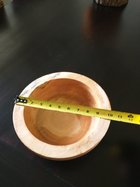
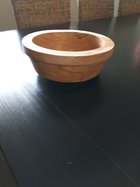
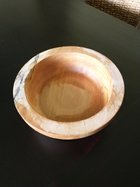
So I have several " wet" sycamore bowl blanks ready to go for turning. I have had the intro to bowl turning class at Wood Craft this past Sept.
So here is my question.
While turning this bowl it was extremely difficult to do , both outside and inside. I felt like I was taking a real beating, so to speak.
I don't know if it is just the species of wood or if the lathe speed was too slow ( I was around 500-550 at this point) or what???
My tools are razor sharp and that is not the problem.
My walnut bowls turned fairly easy compared to this sycamore.
On the hollowing I was literally beat up by the bowl gouge trying to hollow out bowl, so bad it came loose from the tenon, but luckily did not fly off though...
I re-tightened and continued, noticing that the gouge just couldn't find the right mo-jo and was giving me all kinds of trouble. (I had tool rest adjusted to just inside the bowl so as to not have too much over hang off the tool rest.)
By this time the bowl was not longer true to the lathe spindle any more. From all the rough turning.
I pressed forward and finally got the bowl roughed out on the first turn of twice turn.
Here is a pic, wife picked the design.
But any advice is appreciated. I felt defeated at the end and not understanding what was going on.
Other people on you-tube said sycamore cuts like a hot knife through butter???




